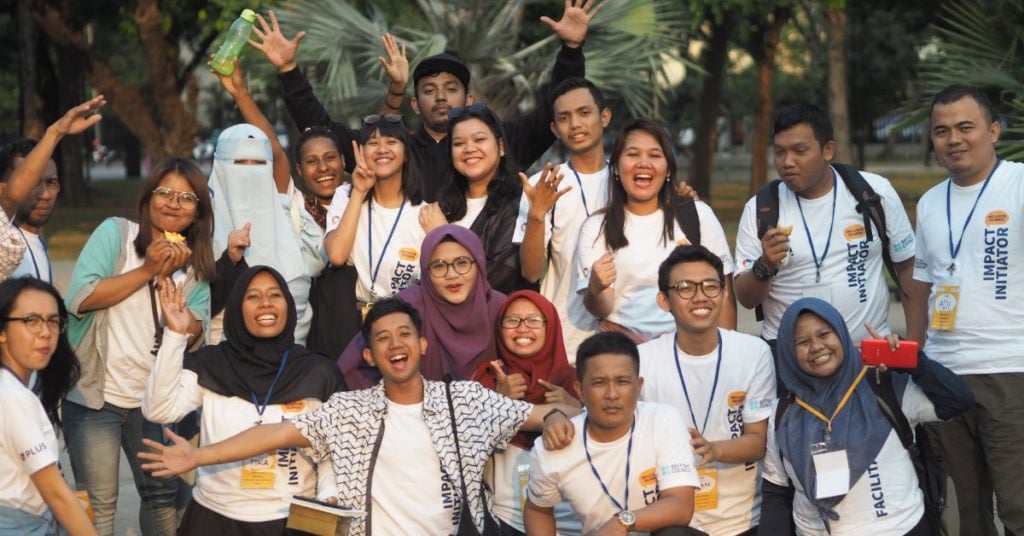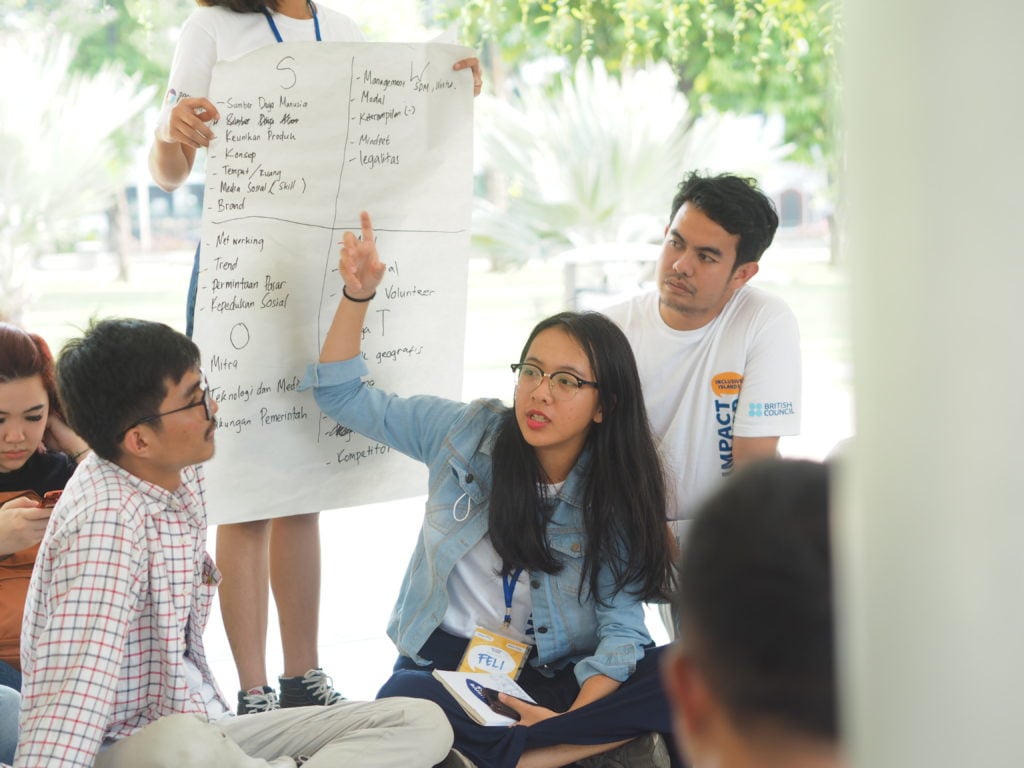There are more than 750 million young people aged 15 to 24 years in Asia Pacific. This accounts for over 60% of the world’s youth.
However, the youth unemployment rate in APAC is approximately 10.5%, more than double the unemployment rate of the total working age population. Poor quality vocational education and lack of decent work prospects mean that young people face both poor educational outcomes and vulnerable employment conditions.
There is already strong and growing donor interest in the development of ‘future skills’ in the region, with a number of private and corporate philanthropists identifying youth employment and skills development as a priority area.
The skills needed to connect young people with the creative economy
But what ‘future skills’ do young people need to develop in order for countries to future-proof its human capital?
We like to refer to these skills, mind-sets and behaviours as a ‘no regrets skillset’ – the skills that changemakers of all ages will need to develop in order to not only survive but thrive in an ever-changing world.
‘Creativity’ – in this case we mean technical not artistic creativity, using lateral thinking techniques like “brainstorming” or “random input”, or “programmed thinking” that relies on logical or structured ways of creating a new product or service. Using our imagination and developing the ability to visualise alternative solutions or states of being supports us to be more effective learners and workers in any role.
‘Social entrepreneurship’ –anyone who is doing something to help solve a social and/or environmental problem in their community in an enterprising way, regardless of age or position is practising ‘social entrepreneurship’. This term is open and inclusive to anyone who wants to make the world a better place.
When young people feel empowered to earn a living through fulfilling work, and their creativity and talents are nurtured, they can take up their roles as active, engaged citizens. This contributes to a positive cycle of economic growth, investment and social justice.
Young people are already turning their learning into action
As adults, if we think back to a time when we have put creativity into action, we are most likely to cite real-life examples. This is what is needed for young people, the opportunity for them to apply these key skills in a real-life setting.
I’ve seen this first hand through the young people that we work with at the Social Enterprise Academy.
Social Enterprise Schools launched in Malaysia in 2021 as part of Good SENS – the flagship financial literacy programme of the Financial Industry Collective Outreach (FINCO).
From upcycling products to provide food for families affected by covid-19, to selling face masks to plant Mangrove saplings, primary school students have developed creative businesses to solve the social and environmental issues that matter most to them and their community.
Likewise, through the Inclusive Islands programme, we saw young social entrepreneurs across Indonesia build peer support networks to grow their social enterprises in creative ways.
Take Atikah Risyad, a young social entrepreneur who established Family Farm Lintau, an agro-tourism social enterprise that develops the tourism and agriculture sectors in Lintau through offering weaving and gardening programmes and rice field tours to tourists.
Or Rusmanhadi Takbir, who offers support and leadership opportunities to young people in Makassar through his social enterprise, BINE, which creates accessories such as keychains, tote bags, and pins from local materials.
Creating a leadership pipeline of young, creative social entrepreneurs
The United Nations declared 2021 the International Year of Creative Economy for Sustainable Development. Indonesia, having sponsored the proposal and proposed the theme of “Inclusively Creative: A Global Recovery”, is leading the initiative to promote the creative economy, which is expected to become a new driver of prosperity.
The creative economy is an evolving concept that builds on the interplay between human creativity and ideas, and intellectual property, knowledge and technology.
By creating a pipeline of young people who are more creative, entrepreneurial and financially literate, Asia and the Pacific’s future prospects for inclusive and sustainable growth, demographic transition and social stability will be able to reach its full potential.
In order to make this happen, we need to explore:
- How do we, as leaders in the impact sector, enable young people’s voices, agency and creativity?
- What can we learn from the next generation about how create fairer and more inclusive communities?





















